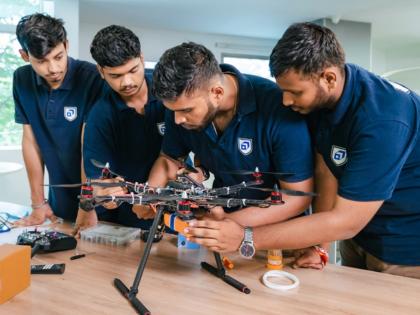India’s AI Future Begins Here: Scaler School of Technology’s New-Age Engineering Blueprint
By PNN | Updated: July 11, 2025 18:04 IST2025-07-11T17:59:20+5:302025-07-11T18:04:11+5:30
New Delhi [India], July 11: Scaler School of Technology (SST) is rapidly emerging as one of the most forward-thinking ...

India’s AI Future Begins Here: Scaler School of Technology’s New-Age Engineering Blueprint
New Delhi [India], July 11: Scaler School of Technology (SST) is rapidly emerging as one of the most forward-thinking institutions for engineering education in India. With a strong focus on computer science, artificial intelligence, and robotics, SST is redefining how young engineers are trained—not just in theory, but through consistent, high-impact practice. From industry-driven labs to top internships and sponsored projects, students are immersed in real-world problem-solving from their very first year. In this exclusive Q&A, the Dean of SST, Anshuman Singh, talks to us about how the institution is cultivating the next generation of AI talent for India—one project, one lab, and one startup-ready software developer at a time.
Q: How is SST preparing students for careers in artificial intelligence, machine learning, and robotics?
A: At SST we have developed a curriculum that not only exposes students to AI and ML as buzzwords; we have embedded AI and ML into the students’ learning from the first year itself. Foundational learning covers programming, data structures, algorithms, and mathematics for machine learning. From there, students advance into applied topics such as supervised and unsupervised learning, deep learning, computer vision, and reinforcement learning.
As students progress, they explore cutting-edge areas including transformer architectures, large language models (LLMs), generative AI, and agentic AI systems. We emphasize real-world applications — students build and fine-tune models, train domain-specific LLMs, experiment with prompt engineering, and design agentic workflows.
What truly sets us apart is the hands-on product-building approach. Our curriculum, designed in collaboration with 100+ leaders from Google, Meta, Flipkart and more to ensure students don't just understand models—they build them, tune them, and deploy them. We are not chasing grades; we are seeking production-ready systems. And the same is true of robotics, where students are launching real actuator control, automation workflows, and AI-enabled robotics systems through hands-on labs and collaborations.
Q: You mentioned labs and real projects—can you tell us more about that?
A: Our Innovation Lab is purposefully structured to build real products that solve everyday problems using AI. Whether it’s training models for speech, vision, or language, students are immersed in projects that simulate real engineering environments.
For example, CareCanvas is an AI-powered skincare assistant that personalizes and tracks users’ progress on their skin care routines through smart, data-driven insights. Another is Varia, an AI voice agent made for human-like phone conversations in B2B and fintech applications. While still a work in progress, this demonstrates the level of complexity students are encouraged to tackle.
We also see deep technical work like speech-to-speech translation and gesture-controlled gaming that were built during our AI/ML Build Day. Events like the 48-hour Gahan AI Hackathon lead to rapid prototyping and the opportunity for interdisciplinary teams to collaborate and work on real-world use cases with the pressure of a deadline.
Student ventures have similar ambitions—ranging from platforms enabling lifelike AI avatars for education and entertainment, to apps that simplify healthcare communication, automate grading, or provide personalized learning content. These aren't just class projects—many are in beta or already have early users.
What makes this ecosystem unique is the year-long Industry Immersion that every student takes part in. Whether they choose to intern, launch their startup, or dive deep into a research project, they gain real experience solving problems at production scale; working with engineers, writing code that actually runs, and learning the process of taking a product from ideation to deployment.
If you have any objection to this press release content, kindly contact pr.error.rectification@gmail.com to notify us. We will respond and rectify the situation in the next 24 hours.
Disclaimer: This post has been auto-published from an agency feed without any modifications to the text and has not been reviewed by an editor
Open in app